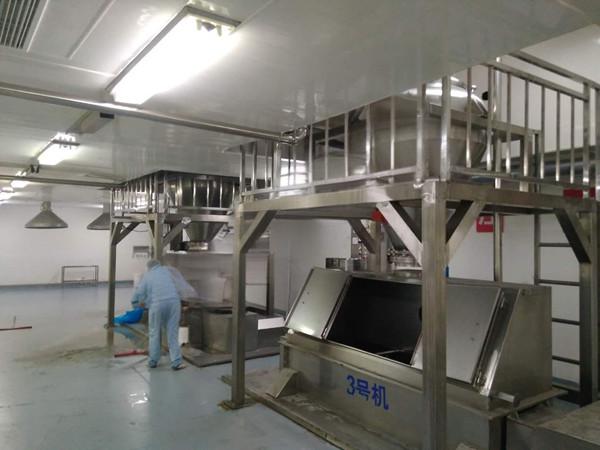×
| Items | Details |
|---|---|
| Application Enterprise | Yangzhou A Baking Enterprise |
| Docking Equipment | Rotary vibrating screen, negative pressure suction feeder (vacuum feeding machine) and dough mixer |
| Original Production Status | Low manual screening efficiency. To process 10 tons of flour per day, 12 people need to cooperate. The foreign object complaint rate is as high as 3.7%. The PM10 concentration in the workshop reaches 45mg/m³, 9 times higher than the national standard. Residues in the screw conveyor lead to microbial growth, with 3 weekly shutdowns. Flour loss is 2.1% (spillage + residue). The foreign object interception rate is 85% (relying on human eye inspection). The energy cost is 8.6kW·h/ton. The microbial sampling qualification rate is 92%. |
| Improvement Measures | Adopt a negative pressure suction feeder combined with a rotary vibrating screen. The 304 stainless steel pipeline is sealed. Use negative pressure airflow (0.5 – 0.8MPa) to transport flour. Add a feeding port (diameter 600mm) in the baffle buffer zone. Configure a 180 – 200 – mesh double – layer screen. Integrate frequency conversion control. Equip with an intelligent reverse blowing system and a vibrator. The equipment has a vertical stacked layout to achieve PLC – controlled unmanned whole process. |
| On – site Effects | The daily processing capacity increases to 80 tons, and the number of workers is reduced to 3 (responsible for patrol inspection). The foreign object complaint rate drops to 0.05%. The fluctuation of flour moisture content is ≤ 0.3%. The dust concentration in the workshop is < 3mg/m³. The annual dust removal cost is reduced by 120,000 yuan. The flour loss rate drops to 0.3% (closed – loop recovery). The foreign object interception rate is increased to 99.9% (mechanical screening). The energy cost drops to 4.2kW·h/ton. The microbial sampling qualification rate reaches 100% (CIP cleaning barrier). The annual cost savings of labor + loss is 2.17 million yuan. The return on investment (ROI) period is < 10 months. |
The general process for food ingredient conveying equipment involves manual measurement. This industry uses a wide variety of raw materials, which are often adjusted on-demand based on orders. Currently, the industry still relies on manual weighing methods. Some materials require pre-processing such as grinding, while others need screening to remove clumps or other non-conforming materials. The discharge ports of the screeners or grinders are connected to our vacuum conveying system pipelines. Powdered materials are transported through the pipelines, and the negative pressure conveying system minimises pipeline leakage issues. Our vacuum conveying system employs a continuous tank-integrated processing design. During mixer operation, materials are temporarily stored in the vacuum conveying system’s hopper. Once the mixer is emptied, the discharge valve is opened, allowing materials to enter the mixer in a single batch. The conveying system can then resume material storage. This continuous operation maximises equipment efficiency.
Shanghai Youwei specialises in vacuum conveying and batching packaging systems for spices and seasonings, addressing common issues such as difficult conveying and pipeline blockages. Our technical staff have mastered the parameters of airflow, airspeed, and pipeline diameter. Shanghai Youwei Mechanical & Electrical has several well-known clients in the food ingredient industry, including Weilan and Wenda. Materials such as salt, white sugar, five-spice powder, chilli powder, and flour have poor flowability, but our technology ensures smooth conveying. We have mastered the key technology for pipeline emptying, which plays an indispensable role in reducing pipeline blockages and improving ingredient accuracy.
During the mixing process in the mixer, materials need to be transported from the screen to the silo. In this application, a continuous vacuum conveying system is used for batch feeding. The volume is designed according to the corresponding process requirements. After the mixer is emptied, the discharge valve is opened, and the materials are loaded into the mixer within 2-3 minutes for mixing. The entire system has a compact cycle and high efficiency. Continuous vacuum conveying offers high conveying efficiency and low energy consumption. It is suitable for batch feeding processes with fixed quantities.
